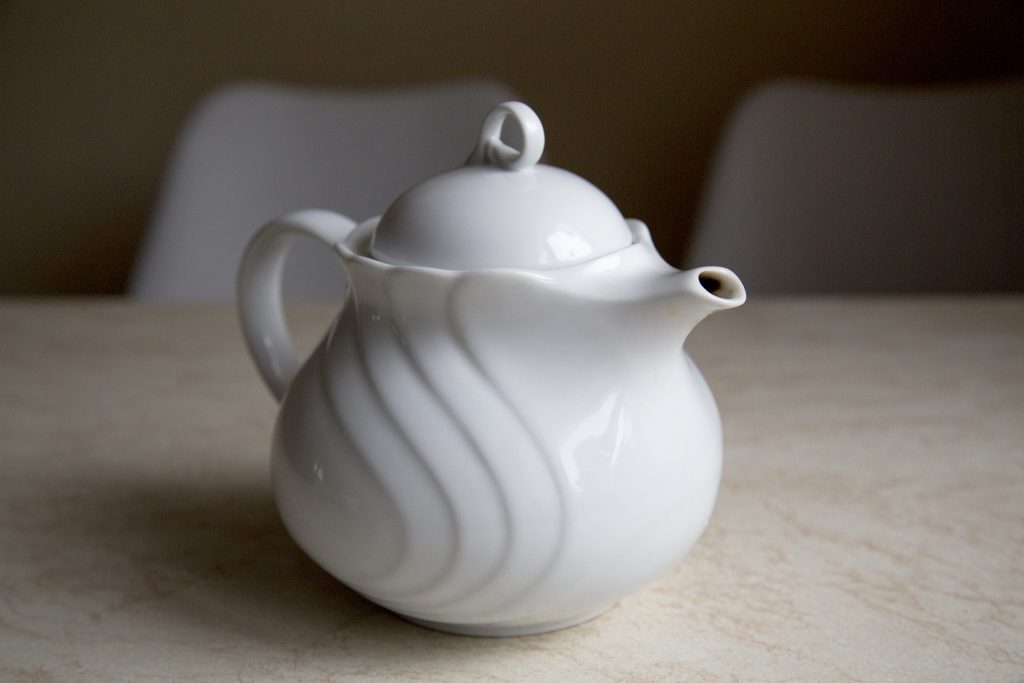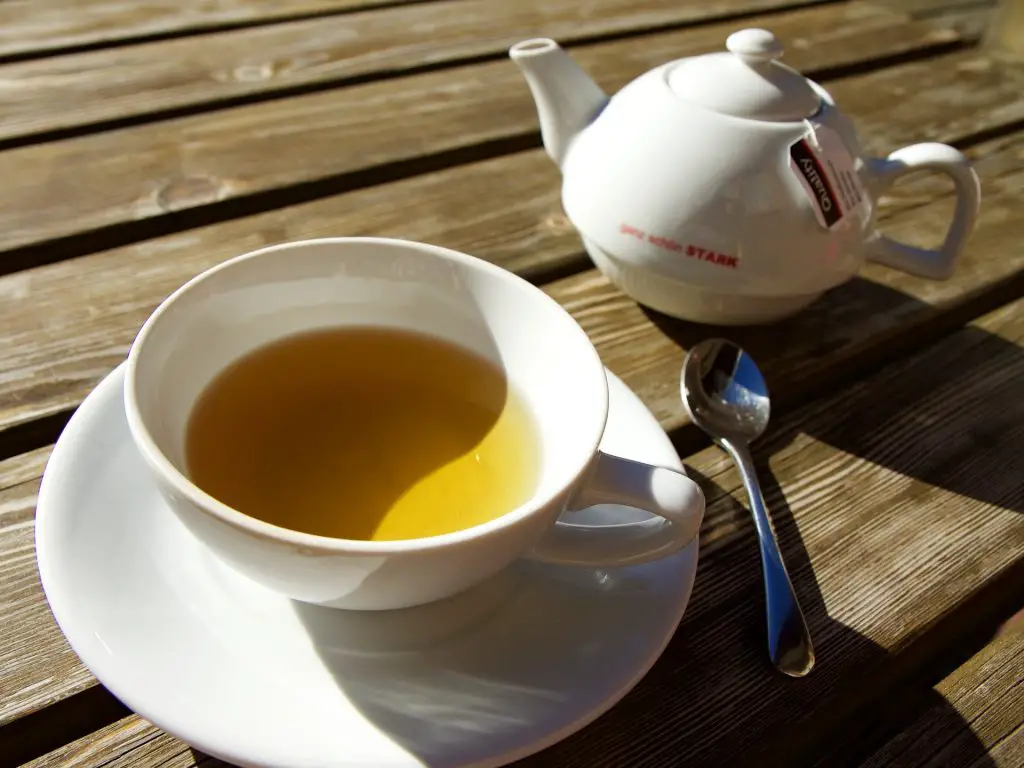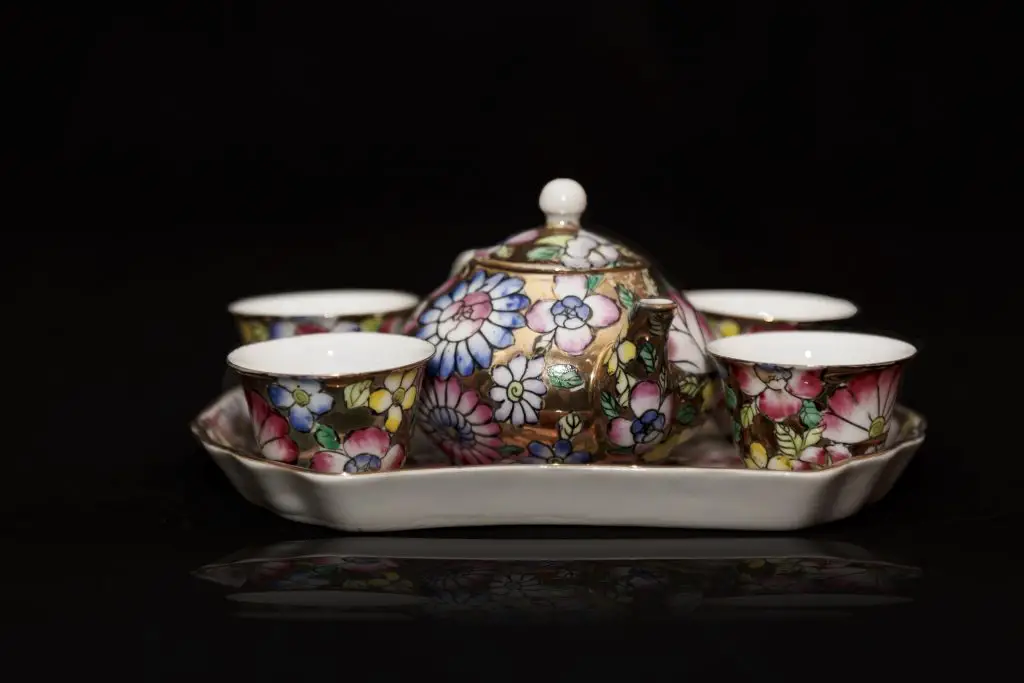There are many different types of teapots you can use to brew tea, but one of the most popular styles is the ceramic teapot. Ceramic has different properties from some other materials used to make teapots, so learning how to use a ceramic teapot is important for getting the most out of your tea. We give instructions below along with some extra tips to help with brewing your tea.
Quick Navigation
How to Use a Ceramic Teapot
Brewing tea is the primary use for a ceramic teapot. Whether you are brewing black tea, green tea, herbal tea, or a blend of any, a teapot made from ceramic is an excellent choice since it will not absorb flavors

Brewing Tea With a Ceramic Teapot
- Start with cool, fresh water. Filtered or spring water is preferred.
- Heat the water in a kettle or pot to the desired temperature.
- At the same time, fill the teapot with hot water from your tap to pre-heat it.
- When the water for tea is heated to the correct temperature, dump the pre-heating water out of the ceramic teapot.
- Place leaves, teabag, or tea filled infuser into the teapot.
- Pour water from the kettle over the tea leaves.
- Cover the teapot with the lid.
- Let brew for approximately 5 minutes.
- Remove the tea leaves from the teapot.
- Pour and enjoy!
One of the most important things to know about ceramic teapots is that, for the most part, they should not be used to heat up or boil water. Water for tea should be heated in a kettle, pot, or other containers specially designed to stand up to direct heat from a stovetop.
There are a few exceptions to this rule, but unless the manufacturer explicitly states that your teapot can be used for heating water, do not use it in that way. Vintage Corningware is a special case, where their specially designed glass-ceramic teapot is safe for stovetop use.
Cleaning a Ceramic Teapot
Ceramic teapots are generally glazed both on the inside and outside. This glazing creates a non-porous surface, allowing for different types of teas to be brewed in the same pot, as well as making cleaning easier. Soap can be used to clean these teapots.
For basic cleaning after use, use hot soapy water and just about any dish rag or brush. A narrow bottle brush can come in handy to clean out the neck and spout of your teapot, for times when leaves might get stuck there and dry in place. Be sure to rinse the teapot thoroughly after cleaning so your next batch does not have a soapy flavor.

Ceramic teapots can stain if for instance you accidentally leave a small amount of tea in it and leave it overnight. The non-porous surface makes it easier to clean, but you still may need to use something stronger than soap and water.
- A mixture of about 1tbsp. of white vinegar per cup of water can help remove most tea stains. Let it soak overnight, then rinse and wash with soap and hot water in the morning.
- A paste of baking soda and water can add a little bit of friction to the cleaning process. 3 parts baking soda to 1 part water is about the right ratio, but you do not need to be exact. Rub the paste on the tea stain with a damp cloth until the stain is gone. Be careful on decorative exterior surfaces.
- Scale from hard water buildup can also occur in ceramic teapots. To descale, use a vinegar and water solution, but up the ratio to equal parts vinegar and boiling water. Let soak for about 20 minutes to a half-hour, empty, rinse, and then wash normally.
If your ceramic teapot is not glazed on the inside, the surface will be porous. In these cases, do not use soap when cleaning, only rinse the inside with hot water. We also recommend that you only brew one type of tea in that teapot since it will absorb flavors, and then impart those flavors to the next batch you brew.
More About Ceramic Teapots
Teapots made out of ceramic are incredibly versatile since they can hold in heat well, can be used with just about any type of tea, and are easy to clean. One of the drawbacks of ceramic is that it can break if treated roughly or dropped, so use a bit of caution when handling teapots made out of ceramic.
Keeping Ceramic Teapots Hot
While ceramic can hold a bit of heat, it will eventually cool off if left by itself. When you are brewing an entire pot of tea this normally means there will be additional tea after pouring your first cup. We would want that remaining tea to stay hot.
The first method includes a device called a tea warmer. These work by raising the teapot off the counter as well as using a heating implement, usually a tea candle. This light bit of heat is enough to keep the tea hot, but not to the extent that it will increase the temperature beyond what you brewed it at.
Another way to keep a teapot hot is to place a tea cozy over the top. This insulated cover keeps heat in without having to worry about a burning implement on your table. The effectiveness is lowered when the teapot sits on a cold counter, so try to place it on top of a trivet, doily, or spare towel.

Ceramic Teapot Tea Brewing Tips
Brewing tea in a ceramic teapot is very easy, but you need to start out with an idea of how weak or strong you prefer your tea. Every tea is different (including related to caffeine levels), so it is a good idea to check the packaging or ask your tea seller what the recommended ratio of leaves to water is. We normally suggest these general rules:
- 1 teaspoon of tea leaves per cup (8 oz)
- 1 teabag per two cups (16 oz)
The length of brewing time will also have a strong influence on the final taste of your tea. Under extraction will create a weak tea, and over-extraction may make a bitter final product. Start with 5 minutes per teapot, and you can increase or decrease the length of brewing time after you have established a baseline.
If you want stronger tea, it is a better idea to add more tea leaves (or another teabag) to the pot instead of brewing for a longer period of time. More leaves will add more flavor, while a longer extraction time has a good possibility of extracting the elements that make tea bitter.

More Ceramic Teapot Tips
- Removing tea leaves from the pot is an important step. The tea can be bitter if over-extracted.
- Use cold water in your kettle. Hot water may reduce the heating time, but sediment buildup in your hot water heater can affect the taste of tea.
- Find the correct temperature and brewing time for your tea either from the manufacturer or through experimentation.
- If you do not have an infuser, you can pour the tea through a strainer so your cup does not have loose leaves in it.
- You can usually steep tea leaves multiple times. The amount of times it can be re-brewed is dependent on the quality of the leaves. You may need to extend the brewing time for additional extraction, but be careful not to overdo it.
Conclusion
A ceramic teapot is a very tolerant tool for brewing tea. Other styles like Yixing or cast iron teapots may be able to create unique flavors in the hands of an advanced tea brewer, but the easy use and cleaning of a ceramic teapot is hard to surpass.

Scott is the founder of TeaMinded. He enjoys tasting and discovering teas from across the globe, with green teas and ceremonial matcha from Japan being among his favorites. He’s grateful to be immersed in the tea community, always learning and sharing along the journey.





